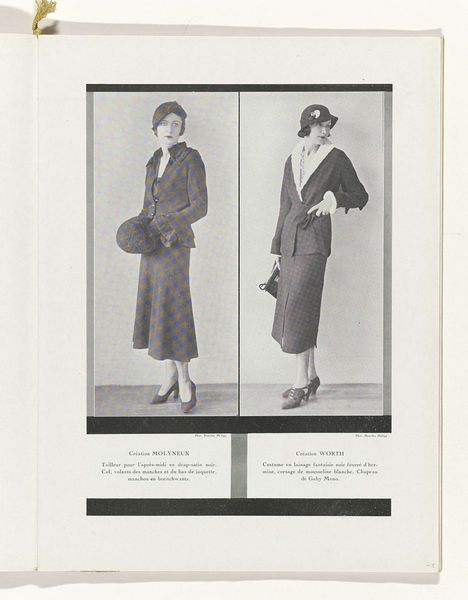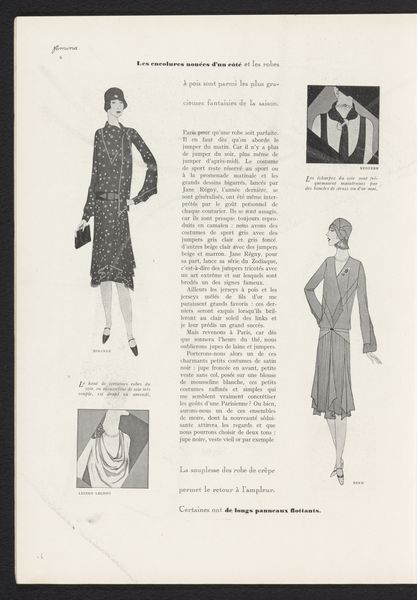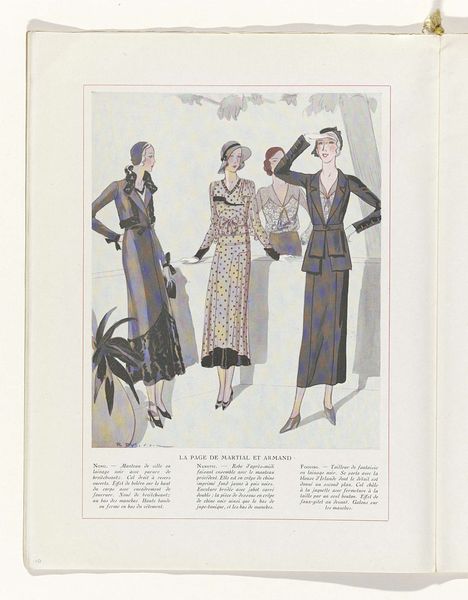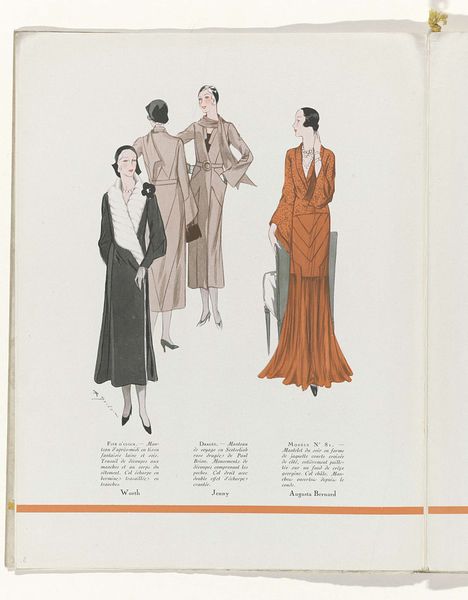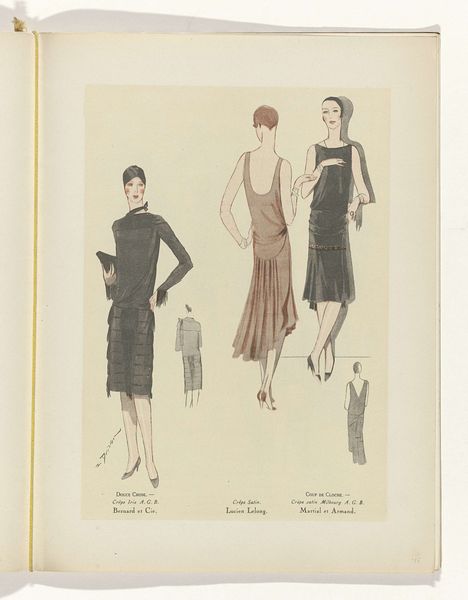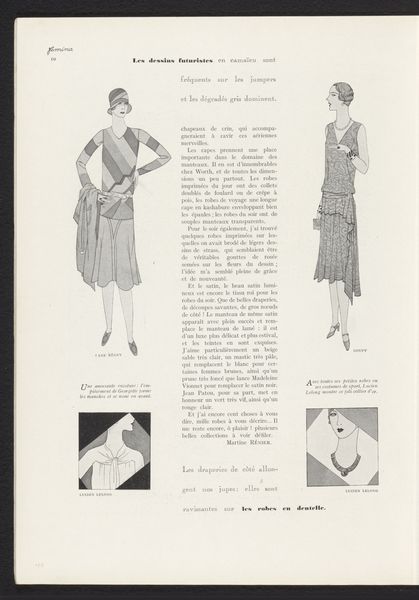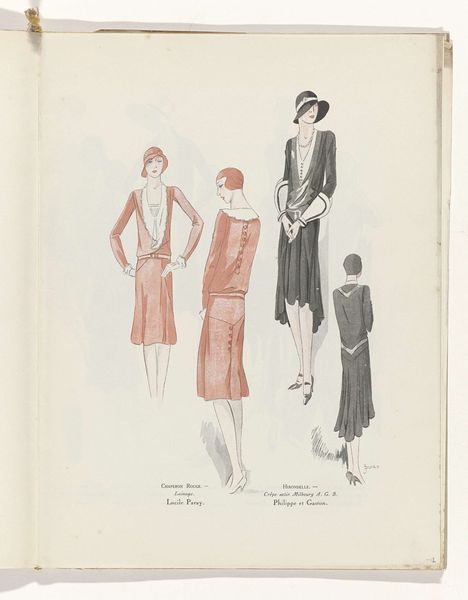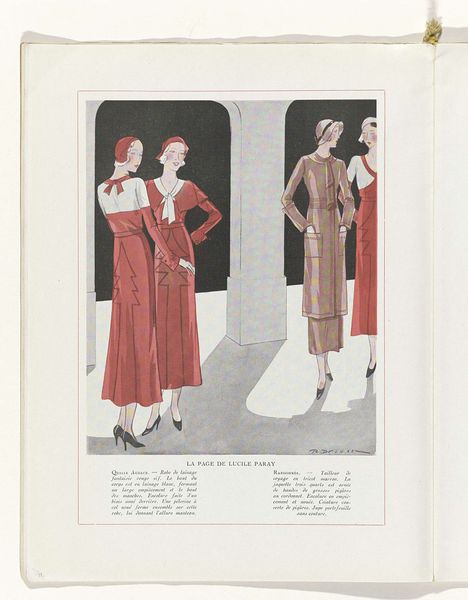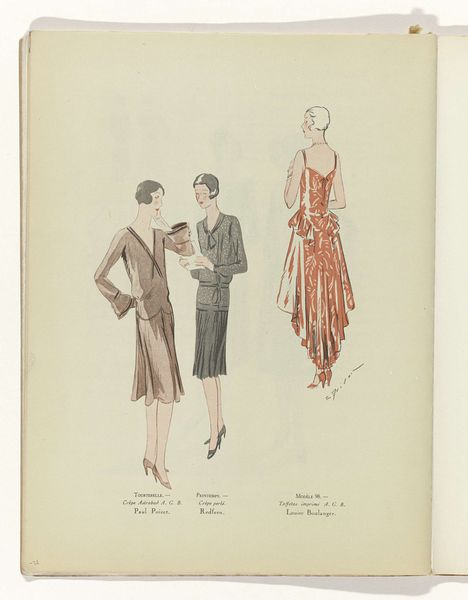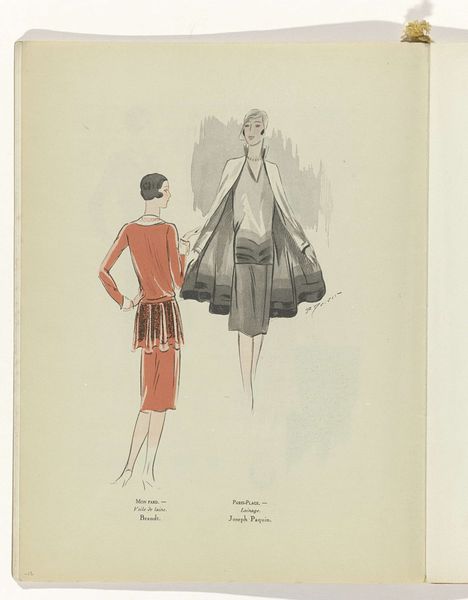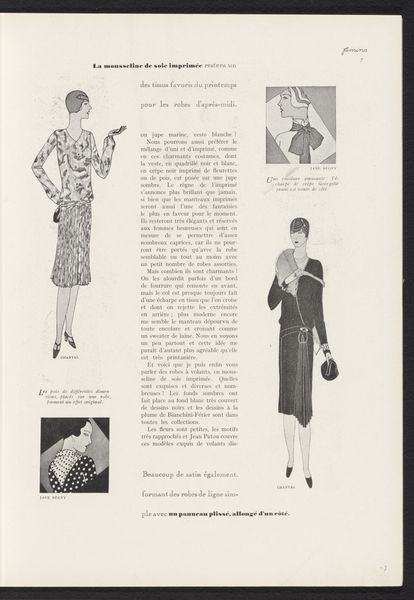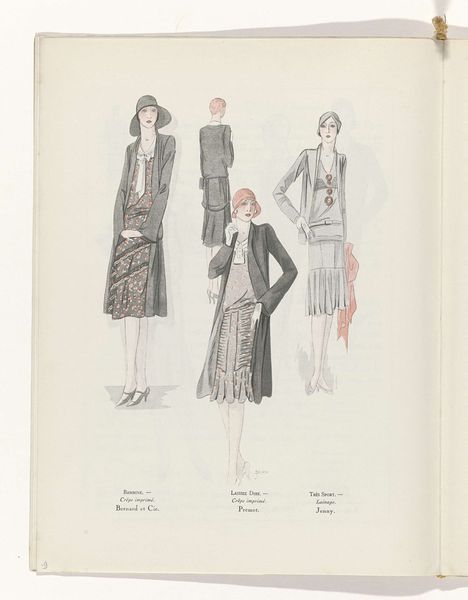
Art - Goût - Beauté, Feuillets de l' élégance féminine, Novembre 1931, No. 135, 12e Année, p. 14 1931
0:00
0:00
paper, photography
#
portrait
#
art-deco
#
paper
#
photography
#
journal
#
dress
Dimensions: height 315 mm, width 240 mm
Copyright: Rijks Museum: Open Domain
Editor: This is a photograph from a 1931 edition of "Feuillets de l'Élégance Féminine", showcasing designs by Edmond Courtois and Paul Poiret. It's interesting how even in a fashion context, we still get a curated view of idealised femininity of the time. What strikes you when you look at this? Curator: What immediately captures my attention is how this image embodies the cultural anxieties and aspirations of the interwar period. Publications like these weren't simply presenting clothing; they were actively shaping and reflecting a specific vision of feminine identity, deeply entwined with emerging socio-political ideals. How do you see the composition of the page contributing to that effect? Editor: Well, the clear, almost clinical presentation gives it an air of authority. It feels like a standard being set. Almost like a manual. Curator: Precisely. These weren't presented as mere suggestions. Think about the social changes happening at the time—women entering the workforce, changing social expectations—and consider how publications like this were mediating those shifts, offering a guide to navigate new roles while reinforcing certain notions of class and elegance. It almost becomes a political statement by omission; what's *not* shown is just as significant as what is. How does the focus on haute couture affect who is included in, and excluded from, this ideal? Editor: That’s a great point! Focusing on high fashion immediately limits the audience, creating an exclusive club of femininity. So this magazine becomes less about practical advice and more about aspirational imagery for a select few. Curator: Exactly. These images weren't simply about dresses, they were about power, class, and access. Understanding the socio-political context of its creation allows us to see past the surface and examine the power structures embedded within this seemingly innocuous fashion spread. Editor: It’s fascinating how much more there is to this image than just the dresses themselves. Looking at art through a historical lens really reveals the layers of meaning. Curator: Absolutely. And by questioning whose voices are amplified and whose are silenced, we can critically examine the lasting impact of these images on our own perceptions.
Comments
No comments
Be the first to comment and join the conversation on the ultimate creative platform.
